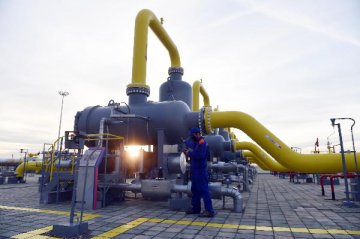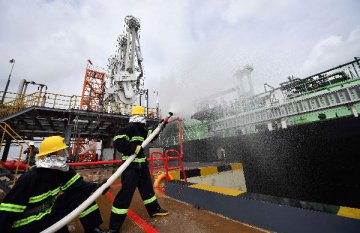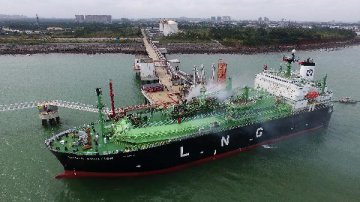HOUSTON, Feb. 28 (Xinhua) -- Working natural gas storage in the contiguous United States was 1,539 billion cubic feet (about 43.6 billion cubic meters) as of Feb. 22, a net decrease of 166 billion cubic feet from the previous week, the U.S. Energy Information Administration (EIA) said in a report on Thursday.
At the level of 1,539 billion cubic feet, the natural gas storage decreased by 9.1 percent from this time last year, or 21.6 percent below the five-year average, according to EIA's Weekly Natural Gas Storage Report.
The contiguous United States consists of the 48 adjoining states of the United States, plus the District of Columbia, and excludes the non-contiguous states of Alaska and Hawaii, and all off-shore insular areas.
Working natural gas is defined as the amount of natural gas stored underground that can be withdrawn for use. Working natural gas storage capacity can be measured in two ways: design capacity and demonstrated maximum working gas capacity.
According to the Natural Gas Monthly report, also released by EIA on Thursday, the U.S. dry natural gas production In December 2018, for the 20th consecutive month, increased year to year.
The preliminary level for dry natural gas production in December 2018 was 2,746 billion cubic feet, or 88.6 billion cubic feet per day. This level was 11.5 percent higher than the December 2017 level of 79.5 billion cubic feet per day.
The average daily rate of dry natural gas production for December 2018 was the highest for any month since EIA began tracking monthly dry natural gas production in 1973.
According to the EIA, the strong growth in U.S. natural gas production will put downward pressure on prices in 2019.
At the level of 1,539 billion cubic feet, the natural gas storage decreased by 9.1 percent from this time last year, or 21.6 percent below the five-year average, according to EIA's Weekly Natural Gas Storage Report.
The contiguous United States consists of the 48 adjoining states of the United States, plus the District of Columbia, and excludes the non-contiguous states of Alaska and Hawaii, and all off-shore insular areas.
Working natural gas is defined as the amount of natural gas stored underground that can be withdrawn for use. Working natural gas storage capacity can be measured in two ways: design capacity and demonstrated maximum working gas capacity.
According to the Natural Gas Monthly report, also released by EIA on Thursday, the U.S. dry natural gas production In December 2018, for the 20th consecutive month, increased year to year.
The preliminary level for dry natural gas production in December 2018 was 2,746 billion cubic feet, or 88.6 billion cubic feet per day. This level was 11.5 percent higher than the December 2017 level of 79.5 billion cubic feet per day.
The average daily rate of dry natural gas production for December 2018 was the highest for any month since EIA began tracking monthly dry natural gas production in 1973.
According to the EIA, the strong growth in U.S. natural gas production will put downward pressure on prices in 2019.






















Latest comments